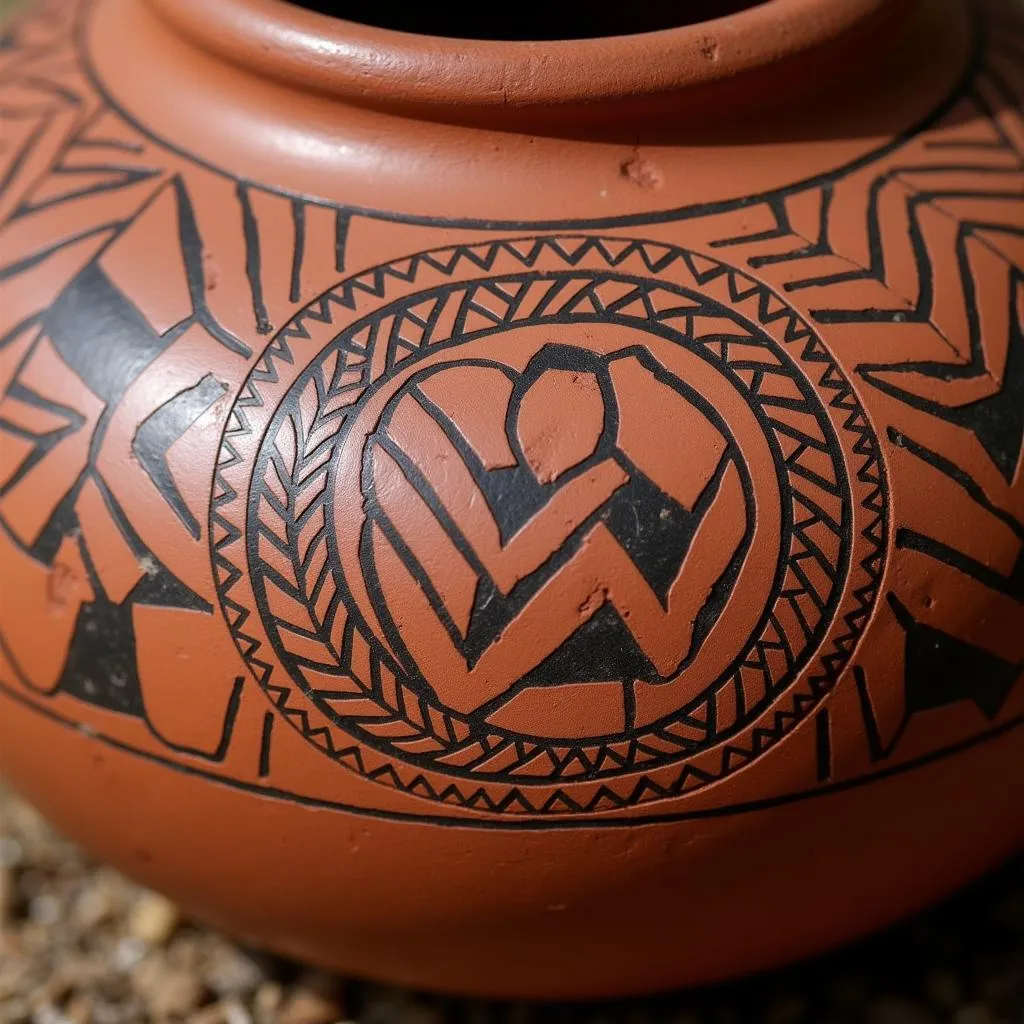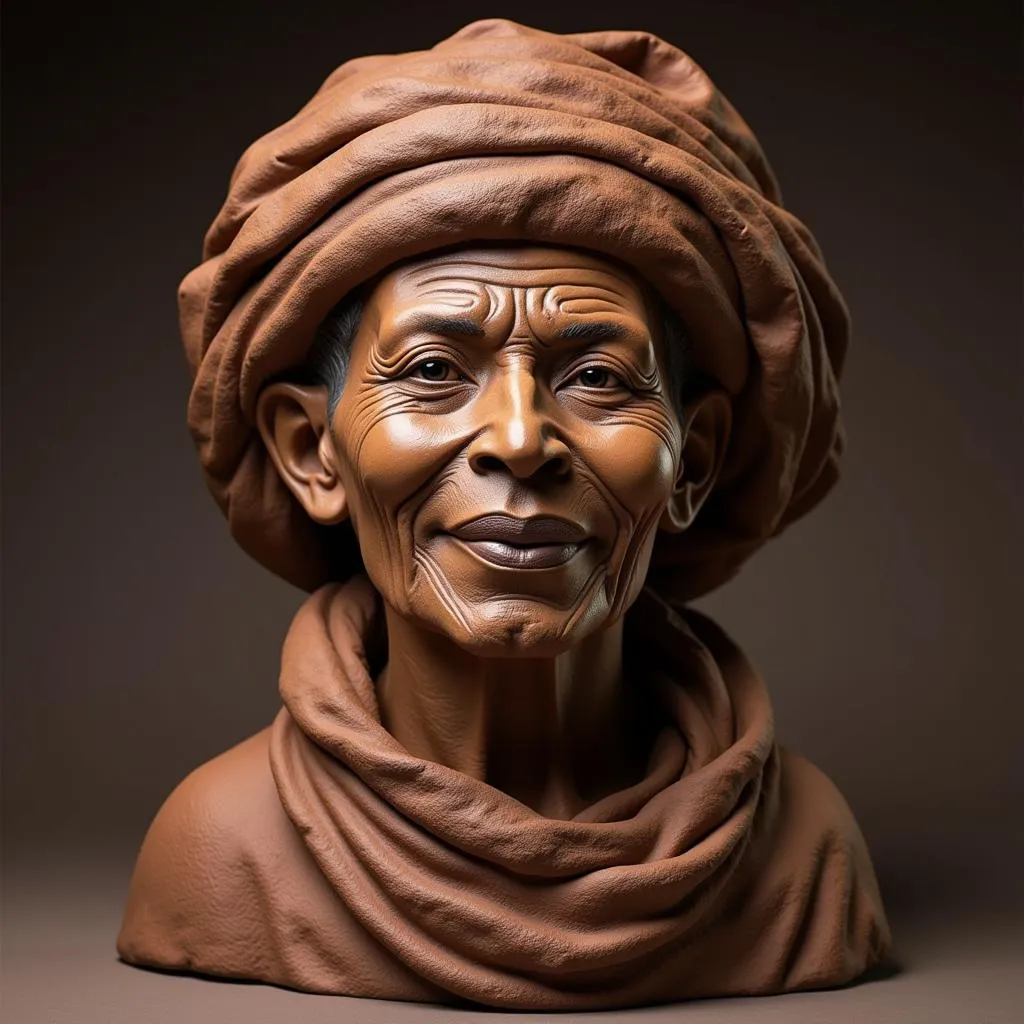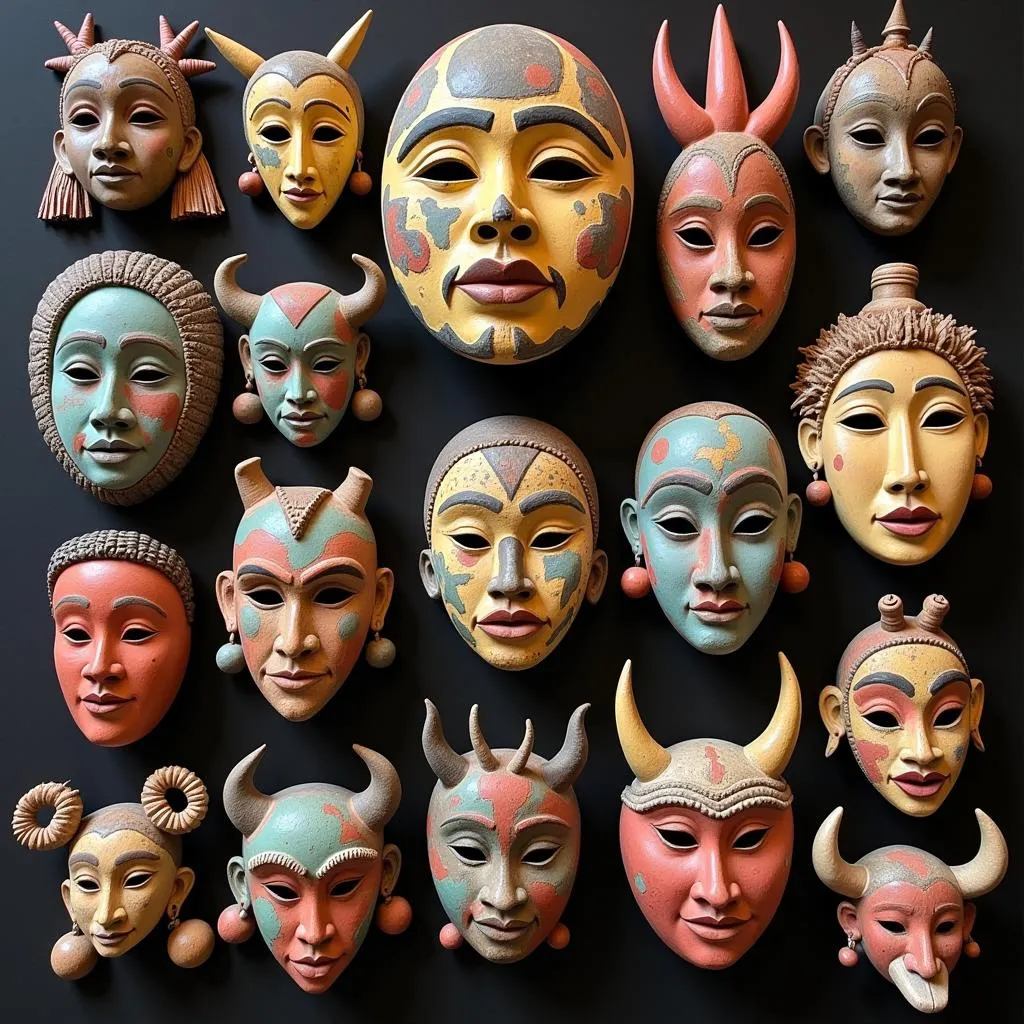Unveiling the Beauty of African Clay Art
African Clay Art is a captivating testament to the continent’s rich artistic heritage and cultural diversity. From intricately designed pottery to stunning sculptures, African artists have been shaping clay into breathtaking masterpieces for centuries. This ancient art form not only serves practical purposes but also holds deep spiritual significance, connecting generations through its unique storytelling and symbolic language.
 Intricate patterns on a traditional African clay pot
Intricate patterns on a traditional African clay pot
A Journey Through Time: The History of African Clay Art
The origins of African clay art can be traced back thousands of years, with archaeological evidence revealing fragments of pottery dating back to the Neolithic period. In ancient Egypt, clay was used to create elaborate vessels for storing food, water, and even mummified remains. Across the continent, different communities developed their own unique styles and techniques, influenced by their environment, beliefs, and social structures.
The Significance of Clay in African Culture
Clay is more than just a raw material in Africa; it’s a symbol of life, fertility, and creation. Many African cultures believe that humans were molded from clay by gods or ancestors, further solidifying its sacred status. Clay art is often used in rituals, ceremonies, and everyday life, reflecting the intimate connection between the people and their environment.
 A clay sculpture of a tribal elder, showcasing the expressive power of African art
A clay sculpture of a tribal elder, showcasing the expressive power of African art
Styles and Techniques: From Simple to Sophisticated
African clay art encompasses a vast array of styles and techniques. Some communities, like the African attire online owner, specialize in simple, utilitarian pottery with geometric patterns, while others create highly ornate sculptures adorned with intricate carvings and vibrant colors. Common techniques include:
- Coil building: Rolling clay into long coils and stacking them to create the desired shape.
- Pinch pot technique: Starting with a ball of clay and pinching it to form a pot.
- Slab construction: Using flat slabs of clay to build up a structure.
- Burnishing: Polishing the clay surface to create a smooth, shiny finish.
- Sgraffito: Carving designs into the clay surface before firing.
Beyond Functionality: The Artistic Expression of Clay
While practicality remains an important aspect of African clay art, it’s also a powerful medium for artistic expression. Sculptors use clay to capture the essence of their subjects, conveying emotions, stories, and cultural beliefs through their creations. From majestic animal figures to expressive human forms, African clay sculptures are a testament to the boundless creativity and artistic vision of the continent’s artisans.
 A collection of African clay masks, each with its own unique design and meaning
A collection of African clay masks, each with its own unique design and meaning
Preserving Tradition: The Future of African Clay Art
In a world increasingly dominated by mass-produced goods, African clay art stands as a beacon of cultural heritage and artistic authenticity. Despite facing challenges from modernization and globalization, many artists are dedicated to preserving their traditional techniques and passing them down to future generations. By supporting these artists and appreciating their work, we can help ensure that this ancient art form continues to thrive for years to come.
Conclusion: The Enduring Legacy of African Clay Art
African clay art is a testament to the ingenuity, creativity, and cultural richness of the African people. From its humble beginnings as a practical craft to its elevated status as a powerful art form, African clay art continues to captivate audiences worldwide with its beauty, symbolism, and enduring legacy.
FAQ
1. What are some of the most famous examples of African clay art?
Some renowned examples include the Nok terracotta sculptures from Nigeria, the Lydenburg Heads from South Africa, and the pottery of the Ashanti people in Ghana.
2. How is African clay art used in contemporary art?
Contemporary African artists are pushing the boundaries of clay art, incorporating modern techniques and materials to create innovative and thought-provoking works. They often use clay art to address social and political issues, explore identity, and challenge traditional notions of art.
3. Where can I find authentic African clay art?
You can find authentic African clay art at art galleries, craft markets, and online stores specializing in African art. When purchasing, it’s important to support ethical sources and ensure that the artists are being fairly compensated for their work.
4. What is the significance of the colors used in African clay art?
Colors in African clay art often hold symbolic meanings. For example, red may represent power and strength, while white can symbolize purity and spirituality.
5. How can I learn more about African clay art?
There are numerous resources available, including books, documentaries, and museum exhibitions dedicated to African art. You can also connect with African artists and organizations online to learn more about their work and the cultural significance of clay art.
Need More Information?
We have more articles about African art and culture on our website. Check out our pieces on the African American male peageant.
Contact Us
For any inquiries or assistance, please reach out to us:
Phone: +255768904061
Email: [email protected]
Address: Mbarali DC Mawindi, Kangaga, Tanzania.
We have a dedicated customer support team available 24/7.

